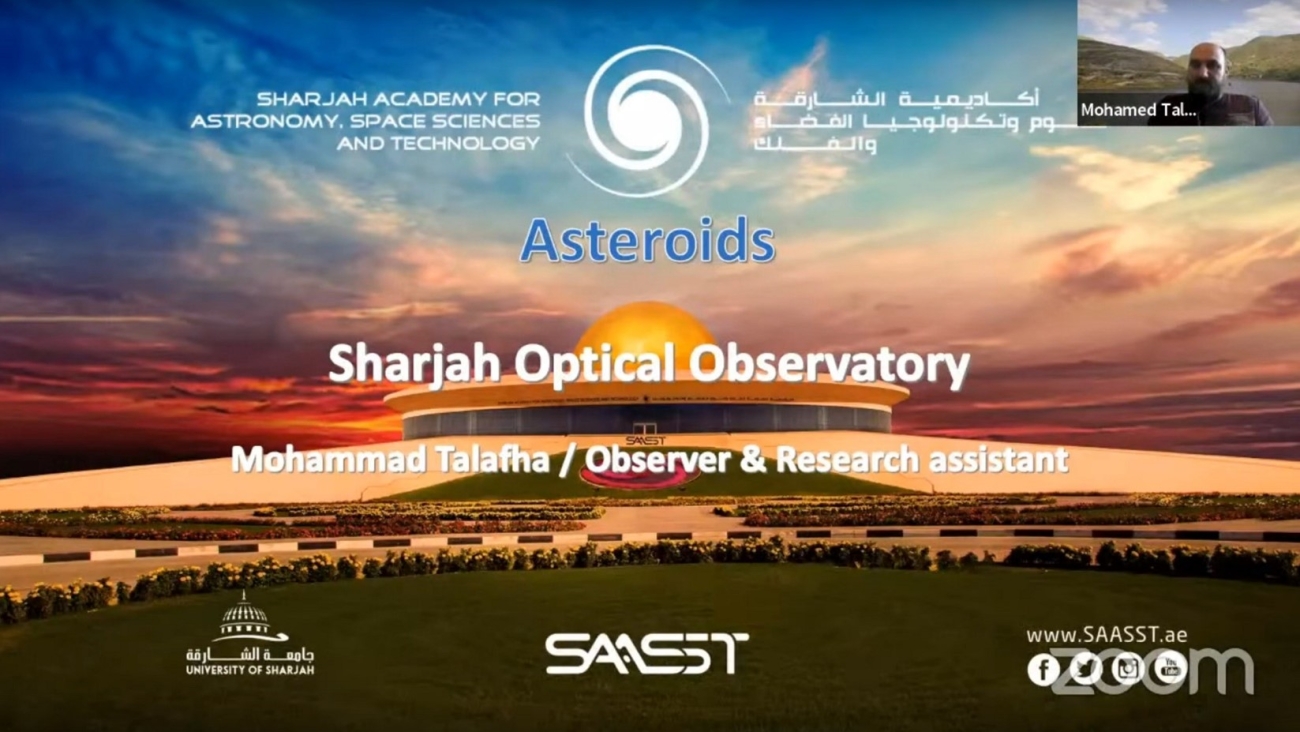Their sizes range can be between a couple of meters to a couple of hundreds of kilometers. Some of them do pose a threat to planet Earth as some
may cross Earth’s orbit and strike us with a devasting power. Sixty-five million years ago a big impact crater formed in the Yucatan Peninsula in Mexico. It was formed when a large asteroid, about 10 kilometers in diameter, struck the Earth.. This evet is believed to be responsible for the extinction of dinousaurs.
Mr. Talafha showed that a great number of observatories worldwide monitor the sky for any potential threat. The “ATLAS” (Asteroid Terrestrial-impact Last Alert System) is one example. ATLAS is an asteroid impact early warning system developed by the University of Hawaii and funded by NASA. It consists of four telescopes (Hawaii ×2, Chile, South Africa), which automatically scan the whole sky several times every night looking for moving objects.
Mr. Talafha also showed the capabilities of the Sharjah Optical Observatory in observing these asteroids. He also mentioned the new “Sharjah Lunar Impact Observatory (SLIO)” in observing lunar impacts. Up to date, SLIO has observed nine impacts.
The whole lecture can be followed using the following link: https://www.youtube.com/watch?v=wa2KuyCXkK8&t=12s



